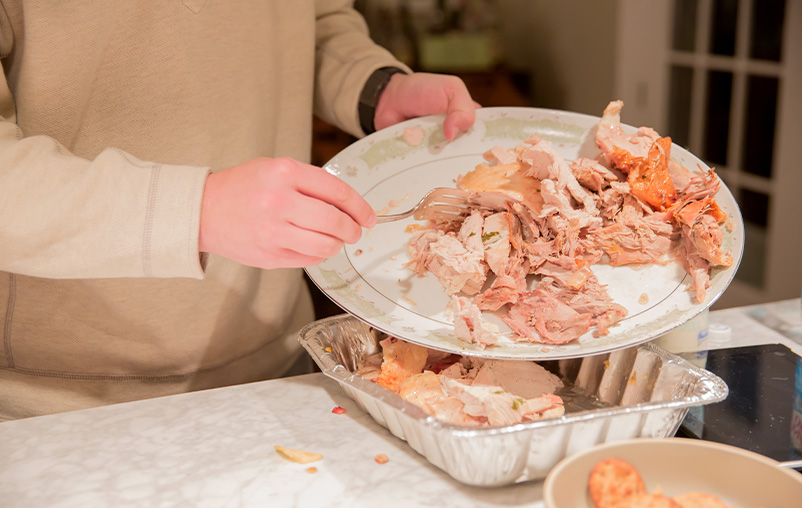Food Safety
Foodborne illnesses are caused by bacteria in foods we eat. Every year, about 1 in 6 Americans will get sick from a foodborne illness, according to the Centers for Disease Control and Prevention.
In 2021, the CDC reported 1,857 illnesses, 413 hospitalizations and seven food-related deaths in Texas.
Handling food safely is an easy way to prevent foodborne illnesses.
Bexar County Food Safety
In San Antonio, the Food and Environmental Health Services division of San Antonio Metropolitan Health District ensures that places like restaurants, hospitals, hotels and daycares adhere to city and state health codes.
You can check a restaurant’s health department inspection scores on their website.
Call 311 to report food poisoning or foodborne illness in Bexar County. You may also submit an online form to the United States Department of Agriculture.
Symptoms of Foodborne Illnesses
- Diarrhea
- Vomiting
- Nausea
- Stomach cramps or pain
- Fever
Factors that Increase Your Risk of Severe Foodborne Illnesses
Of the 48 million Americans who get food poisoning each year, about 3,000 of them die. While food poisoning can affect anyone, it can make some people severely sick, resulting in death.
Risk factors for severe foodborne illnesses include:
- Being ages 65 years or older
- Being ages 5 years or younger
- Being pregnant
- Having a weakened immune system
If you are at a high risk for foodborne illnesses, there are ways to prevent serious illness. The CDC recommendations are below.
Preventing Foodborne Illnesses
The CDC recommends four simple steps to handle, prepare and store food safely: clean, separate, cook and chill.
1. Clean
Wash your hands and countertops before and after preparing food to keep bacteria from spreading.
Rinse produce under running water – don’t use soap or detergent – to reduce your risk of consuming germs like E. coli, salmonella and listeria.
Rinse fruits and vegetables even if you don’t plan on eating the peel. Germs can still spread inside the fruit or vegetable when you cut into it.
Do not rinse raw meat in the sink. This spreads germs. Cooking meat to a safe internal temperature ensures that all harmful bacteria is killed.
2. Separate
Separate raw meat from food that is ready to eat and use separate cutting boards. Keep meat, poultry, seafood and eggs sealed and separate from other foods in the refrigerator.
3. Cook
Cook food to the proper internal temperature to ensure all germs have been killed. Use a food thermometer to measure its internal temperature.
4. Chill
Properly refrigerate food to keep it out of the “danger zone” (40° -140°F) where bacteria multiplies on food quickly.
Thaw frozen foods in the refrigerator or in the microwave, not on the counter. Thawing food on the counter at room temperature risks bacteria growth.
What To Do if You’re Feeling Sick
Usually, you will not need medical attention if you’re sick with food poisoning. It will pass on its own, but there are ways to ease the symptoms:
- Stay home and rest
- Hydrate with electrolytes
- Eat the BRAT diet (bananas, rice, applesauce and toast)
- Manage nausea and diarrhea with over-the-counter medicines like Pepto-Bismol and Imodium
University Health patients can call NurseLink at 210-358-3000 for real-time health advice from a nurse if they are feeling sick.
When To See a Doctor
You should call your doctor if:
- There is blood in your vomit or stools
- Diarrhea lasts longer than three days
- You are severely dehydrated
- Your fever is above 100.4 degrees F
- You are in severe pain
- If your vision is blurry or limbs are tingly/numb

